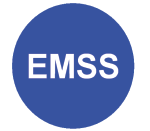A simulation of an end-of-life reverse supply chain for electric vehicle batteries
- a,b Aston Business School, Aston University, Birmingham, United Kingdom
- c Aston Logistics & Systems Institute, Aston University, Birmingham, United Kingdom
Cite as
Venegas M., Greasley A., Matopoulos A. (2021). A simulation of an end-of-life reverse supply chain for electric vehicle batteries . Proceedings of the 33rd European Modeling & Simulation Symposium (EMSS 2021), pp. 315-319. DOI: https://doi.org/10.46354/i3m.2021.emss.043
Abstract
The purpose of this study is to investigate the operation of an integrated end-of-life supply chain network in which authorised treatment facilities (ATFs), remanufacturers, and recyclers offer to Electric Vehicle (EV) manufacturers the end of life (EOL) management of batteries within the UK. A simulation model has been constructed in order to measure the process efficiency, labour costs and transport costs of this reverse supply chain network for different resource (capacity) configurations. Although current demand for the management of the end-of-life (EOL) for the batteries is low there is a prediction of a rapid increase in demand as Electric Vehicle sales increase and the EV batteries within these vehicles reach their end of life. It is intended that the simulation will provide an indication of the potential capacity requirements through the supply chain that are required to deal with this future demand.
References
- Govindan, K., Soleimani, H. and Kannan, D. (2015). Reverse logistics and closed-loop supply chain: A comprehensive review to explore the future, European Journal of Operational Research, 240:603–626.
- Guide Jr., V., & Van Wassenhove, L. (2002). The Reverse Supply Chain. Harvard Business Review, 80:25–26.
- Jayant, A., Gupta, P. and Garg, S. K. (2014). Simulation modelling and analysis of network design for closed-loop supply chain: A case study of battery industry, in Procedia Engineering, 97: 2213-2221.
- Kelton, W.D., Sadowski, R.P., Zupick, N.B. (2015). Simulation with Arena, Sixth Edition, McGraw-Hill Education.
- Matopoulos, A., Vlachopoulou, M., Manthou, V., & Manos, B. (2007). A conceptual framework for supply chain collaboration: Empirical evidence from the agri-food industry. Supply Chain Management: An International Journal, 12: 177–186.
- Moores, S. (2017). Energy storage technologies and the supply chain risks and opportunities, https://www.energy.senate.gov/services/files/1F127706-E2AC-46CE-822D-FCF97E61619F.
- Panahifar, F., Byrne, P. J., Salam, M. A., & Heavey, C. (2018). Supply chain collaboration and firm's performance, Journal of Enterprise Information Management, 31: 358-379.
- Winslow, K. M., Laux, S. J., & Townsend, T. G. (2018). A review on the growing concern and potential management strategies of waste lithium-ion batteries, Resources, Conservation and Recycling, 129: 263–277.
- Yanikara, F. S. and Kuhl, M. E. (2015). A simulation framework for the comparison of reverse logistic network configurations, Proceedings of the 2015 Winter Simulation Conference, 979-990.
- Zeng, X., Li, J., & Liu, L. (2015). Solving spent lithium-ion battery problems in China: Opportunities and challenges. In Renewable and Sustainable Energy Reviews, 52: 1759-1767.
